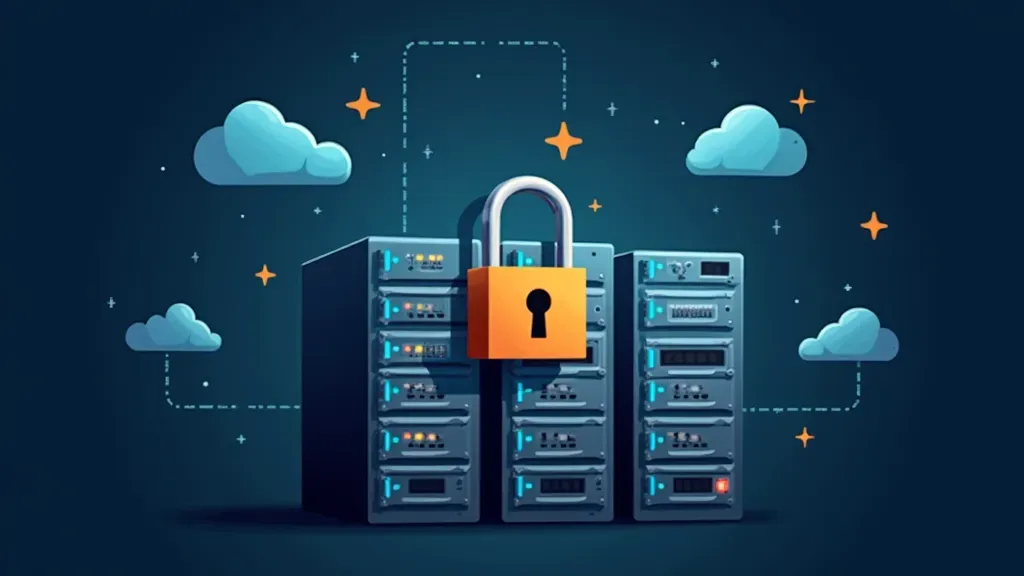Abyss Locker ransomware is emerging as a formidable cyber threat, particularly targeting critical network devices such as VMware ESXi servers. Since its rise in 2023, this ransomware has employed advanced techniques to breach corporate networks, leading to alarming instances of data exfiltration and financial extortion. With a focus on exploiting vulnerabilities in virtualized environments, Abyss Locker poses significant risks to organizations reliant on VMware technology. As cybersecurity threats continue to evolve, ransomware attack prevention strategies are more crucial than ever, especially for businesses managing sensitive data. Implementing robust measures, such as network segmentation and vigilant monitoring, can help mitigate the risks associated with this and other ransomware attacks.
The Abyss Locker ransomware, often referred to in discussions about modern cyber threats, has gained notoriety for its targeted assaults on virtualized infrastructures, especially VMware ESXi servers. This malicious software utilizes a complex infiltration strategy that not only encrypts data but also threatens to leak sensitive information, thereby employing a double-extortion model. As businesses increasingly rely on technology for data management, the necessity for effective ransomware solutions becomes paramount. In light of these developments, organizations are urged to prioritize cybersecurity measures, including the implementation of rigorous patch management and proactive network defenses. Understanding the implications of such threats is essential for ensuring the integrity and security of enterprise data.
Understanding Abyss Locker Ransomware
Abyss Locker ransomware represents a new wave of cyber threats, specifically targeting critical network devices, particularly VMware ESXi servers. This ransomware is known for its advanced tactics that not only encrypt data but also exfiltrate sensitive information, making it a dual threat to enterprises. Since its emergence, Abyss Locker has rapidly developed sophisticated methods to infiltrate corporate networks, taking advantage of vulnerabilities in edge devices and leveraging them for unauthorized access.
The impact of Abyss Locker ransomware extends beyond just file encryption. Organizations face the threat of financial loss due to operational downtime and potential data breaches. The reliance on virtualized environments, especially VMware ESXi, has made many businesses vulnerable. Therefore, understanding the operational mechanics of Abyss Locker is crucial for developing effective cybersecurity strategies and enhancing overall network security.
The Attack Flow of Abyss Locker Ransomware
The attack flow of Abyss Locker ransomware begins with the exploitation of vulnerabilities in edge devices such as unpatched VPNs. Attackers typically utilize well-documented exploits, such as CVE-2021-20038, to gain initial access to the network. Once inside, they deploy various tools and malware to establish persistence, targeting critical network devices like NAS systems and VMware ESXi servers. By exploiting administrative credentials, attackers can enable SSH access and create reverse SSH tunnels to their command-and-control servers.
This meticulous approach enables Abyss Locker operators to navigate through the network undetected, conducting reconnaissance and preparing for further attacks. The use of a Linux ELF encryptor specifically designed for VMware ESXi systems highlights the ransomware’s tailored tactics. By listing and terminating virtual machines using the esxcli command-line tool, the malware encrypts essential files, leaving organizations in a vulnerable position and amplifying the need for robust cybersecurity protocols.
Double Extortion Tactics Used by Abyss Locker
Abyss Locker employs a double-extortion strategy that significantly heightens the pressure on victims. Once the ransomware infiltrates a network and exfiltrates sensitive data, it threatens to release this information publicly unless a ransom is paid. Victims have reported the loss of vast amounts of data, with some cases involving exfiltration volumes of 35 GB to 700 GB. This tactic not only aims to extort money but also to damage the reputation of the affected organizations.
The cybercriminals behind Abyss Locker leverage tools like Rclone to facilitate data exfiltration, cleverly disguising them to evade detection. By targeting specific file types for transfer to cloud services, they can efficiently remove sensitive data from compromised networks. Organizations must recognize the implications of such tactics and implement comprehensive data protection measures to mitigate the risks associated with double extortion.
Data Exfiltration Techniques in Abyss Locker Attacks
Data exfiltration is a critical component of Abyss Locker’s attack methodology. The group utilizes advanced tools to siphon off sensitive data before launching the ransomware payload. For instance, they often modify the names of exfiltration tools to avoid detection by security systems, enabling them to operate discreetly within the network. This stealthy approach allows attackers to gather intelligence on their targets and prepare for maximum impact.
Once the data has been exfiltrated, Abyss Locker threatens to publish the stolen information on its Tor-based leak site, thereby forcing victims into a corner. The sheer volume of data compromised can pose significant risks to an organization, not only leading to financial loss from ransom payments but also potential legal repercussions and reputational damage. As such, organizations must prioritize data security and invest in solutions that can detect and prevent unauthorized data transfers.
Mitigation Strategies Against Abyss Locker Ransomware
To combat the threats posed by Abyss Locker ransomware, organizations must adopt a multi-layered approach to cybersecurity. Key strategies include regular patch management to ensure that vulnerabilities in edge devices and applications are addressed promptly. By keeping systems up-to-date, organizations can significantly reduce the risk of initial access points being exploited by attackers.
Additionally, implementing network segmentation is crucial. By isolating critical infrastructure into separate VLANs with strict firewall rules, organizations can limit the lateral movement of attackers within their networks. Coupling these technical measures with robust endpoint protection can further bolster defenses against ransomware attacks, safeguarding sensitive data and maintaining operational integrity.
Enhancing VMware ESXi Security
Given that Abyss Locker specifically targets VMware ESXi servers, enhancing security for these environments is essential. Organizations should prioritize the hardening of ESXi instances by disabling unnecessary services and implementing strict access controls. By limiting administrative access and monitoring SSH activity rigorously, organizations can mitigate the risk of unauthorized access and potential exploitation.
Moreover, regular audits of ESXi configurations and security settings can help identify potential vulnerabilities before they are exploited. Employing intrusion detection systems (IDS) and continuous monitoring tools can also provide real-time alerts on suspicious activities, allowing for swift incident response and minimizing potential damage from ransomware attacks.
The Importance of Data Backup Security
Data backup security is paramount in the fight against ransomware threats like Abyss Locker. Organizations should implement immutable backups, ensuring that backup data cannot be altered or deleted by ransomware. Storing backups in isolated environments, separate from the production network, can also protect them from being compromised during an attack.
Regularly testing backup restoration processes is equally important, as it ensures that data can be recovered quickly in the event of an attack. By maintaining a robust backup strategy, organizations can not only safeguard their critical data but also minimize downtime and restore operations with minimal disruption.
Monitoring and Anomaly Detection
Effective monitoring and anomaly detection are crucial components of a comprehensive cybersecurity strategy against threats like Abyss Locker ransomware. Organizations must deploy monitoring tools that can track unusual SSH activity, unauthorized access attempts, and rapid file changes indicative of ransomware behavior. By establishing baseline behavior for network activity, security teams can quickly identify deviations that may signal a potential attack.
Incorporating artificial intelligence (AI) and machine learning (ML) into security monitoring can enhance threat detection capabilities. These technologies can analyze vast amounts of data to identify patterns and anomalies that human analysts might miss. By leveraging advanced monitoring solutions, organizations can bolster their defenses and respond proactively to emerging cybersecurity threats.
The Growing Sophistication of Cybersecurity Threats
The emergence of Abyss Locker ransomware underscores the increasing sophistication of cybersecurity threats targeting enterprises today. As attackers continually refine their methods, organizations must remain vigilant and proactive in their defense strategies. The focus on virtualized environments, such as VMware ESXi, reveals a critical area that requires enhanced security measures and awareness.
Moreover, the trend towards double extortion tactics indicates that attackers are not merely seeking ransom payments but are also leveraging stolen data as a means of coercion. This evolving landscape calls for a comprehensive understanding of potential threats and the implementation of robust cybersecurity frameworks to safeguard sensitive data and maintain operational resilience.
Frequently Asked Questions
What is Abyss Locker ransomware and how does it affect VMware ESXi servers?
Abyss Locker ransomware is a sophisticated cyber threat that specifically targets VMware ESXi servers, exploiting vulnerabilities to gain access, exfiltrate sensitive data, and encrypt critical systems for ransom. Its attacks often begin by compromising edge devices, leading to devastating consequences for organizations relying on virtualized environments.
How can organizations prevent ransomware attacks like Abyss Locker on their ESXi servers?
To prevent ransomware attacks like Abyss Locker on VMware ESXi servers, organizations should implement robust security measures such as regular patch management for edge devices, network segmentation to isolate critical infrastructure, and enhanced endpoint protection to detect and respond to anomalies quickly.
What tactics does Abyss Locker ransomware use for data exfiltration?
Abyss Locker ransomware employs various tactics for data exfiltration, including the use of renamed tools like Rclone to transfer sensitive files to cloud storage and disabling endpoint protection mechanisms to bypass security measures. This double-extortion model not only encrypts data but also threatens public exposure of stolen information.
Why is network segmentation important in defending against Abyss Locker ransomware?
Network segmentation is crucial in defending against Abyss Locker ransomware as it isolates critical infrastructure into separate VLANs, reducing the attack surface and limiting the ransomware’s ability to move laterally within the network. This strategic measure enhances overall cybersecurity and protects vital assets.
What are the key indicators of an Abyss Locker ransomware attack?
Key indicators of an Abyss Locker ransomware attack include unusual SSH activity, unauthorized access attempts on VMware ESXi servers, and rapid file changes such as unexpected encryption of virtual disks and snapshots. Monitoring for these anomalies is essential for early detection and response.
How does Abyss Locker ransomware utilize double extortion techniques?
Abyss Locker ransomware utilizes double extortion techniques by not only encrypting victims’ data but also exfiltrating it for leverage. The attackers threaten to publicly release stolen data unless the ransom is paid, increasing pressure on victims to comply with their demands.
What should organizations do to secure backups against Abyss Locker ransomware?
Organizations should secure their backups against Abyss Locker ransomware by utilizing immutable storage solutions, ensuring backups are isolated from production networks, and implementing regular testing of backup restoration processes to guarantee data integrity and availability.
What vulnerabilities in VMware ESXi servers are commonly exploited by Abyss Locker ransomware?
Abyss Locker ransomware commonly exploits known vulnerabilities in VMware ESXi servers, such as unpatched administrative credentials and SSH access configurations. Keeping software updated and monitoring for exposed services is vital to mitigate these risks.
How does Abyss Locker ransomware maintain persistence within a compromised network?
Abyss Locker ransomware maintains persistence within a compromised network by deploying tunneling tools and malware on critical devices, creating reverse SSH tunnels, and utilizing semi-persistent backdoors to facilitate ongoing access and reconnaissance.
What role does cybersecurity play in defending against threats like Abyss Locker ransomware?
Cybersecurity plays a vital role in defending against threats like Abyss Locker ransomware by implementing proactive defense strategies, including monitoring for vulnerabilities, employing advanced endpoint protection, and ensuring regular training and awareness for staff to recognize potential threats.
| Key Points | Details |
|---|---|
| Overview | Abyss Locker ransomware targets critical network devices, especially VMware ESXi servers, since 2023. |
| Attack Flow | Exploits vulnerabilities in edge devices, deploying malware to maintain persistence and evade detection. |
| Targeted Systems | Focus on network-attached storage (NAS) and VMware ESXi servers using SSH access and reverse tunnels. |
| Encryption Method | Uses a Linux ELF encryptor to encrypt virtual machine files, appending .crypt extension. |
| Double Extortion | Exfiltrates data (35-700 GB), threatening public exposure if ransom isn’t paid. |
| Data Exfiltration Tools | Utilizes tools like Rclone to transfer data to cloud storage, evading detection. |
| Mitigation Strategies | Implement patch management, network segmentation, endpoint protection, and secure backups. |
Summary
Abyss Locker ransomware represents a significant threat to corporate networks, particularly due to its focus on VMware ESXi servers. This evolving malware employs sophisticated techniques for infiltration and data exfiltration, utilizing double extortion tactics to maximize financial gain from victims. Organizations must adopt proactive security measures, including regular updates and effective monitoring, to defend against the potential risks posed by Abyss Locker ransomware.












Leave a Reply